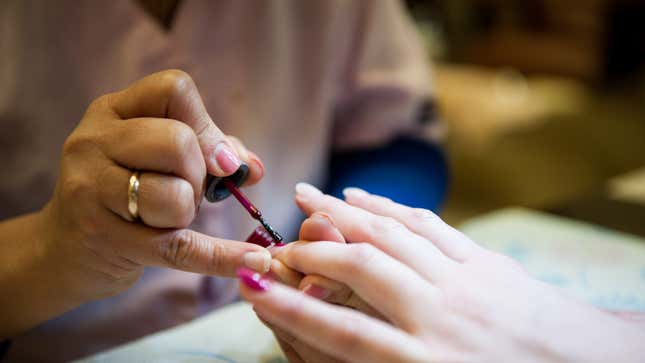Nail Salon Workers Are Still Fighting the Same Toxic Conditions
Latest

On Tuesday morning, Yanelia Raminerz, a manicurist who has worked for Envy Nails for the last eight years, stood outside one of the New York chain’s Bronx locations. The shop’s sign, rendered in a delicate curlicued script, rose behind her. “If I am afraid, and I don’t speak out,” she said in Spanish translated by an interpreter, “no one will.”
Whether or not you’ve been to Envy, perhaps you’ve been to a nail salon like it: a long row of chairs and tables paired with a long line of workers, almost always women, bent over their customers’ fingers and toes. At Envy, customer reviews are terrible nearly across the board. They cite “awful customer service,” a staff with an “attitude,” and a lack of English-language skills. “The girl had no passion for the job she was doing at all,” wrote one reviewer recently, noting her manicurist was “distracted” by her young daughter in the shop. “The chemical small was overwhelming,” wrote another: “Holding my breath wasn’t an option since I’d breathe it in when I passed out.”
You could see these reviews as a sign that Envy employees are poor workers. In another, perhaps more plausible, reading, they are indicative of an overextended and underpaid workforce buffing nails in hazardous conditions.
Like a great number of workers in the city’s 6,000 nail salons, many of them immigrants, Ramirez is paid largely on commission. If no clients come in, she said, she has little income; if she has no customers in the morning, she works late into the evening. “It’s a very unstable and stressful job,” she said. “I have no time to spend with my children,” never knowing when she’ll be able to leave work. Prices, she noted, are low at Envy—a manicure-pedicure runs less than $40—as is the pay. And nail salon workers say that, even with new regulations in place, they still need better ventilation to protect them from the harmful chemicals they work with. “No matter how many times we complain,” she said, “nothing gets better.”
-

-

-

-

-

-

-

-

-

-

-

-

-

-

-

-

-

-

-

-

-

-

-

-

-

-

-

-

-

-

-

-

-

-

-

-

-

-

-

-








































